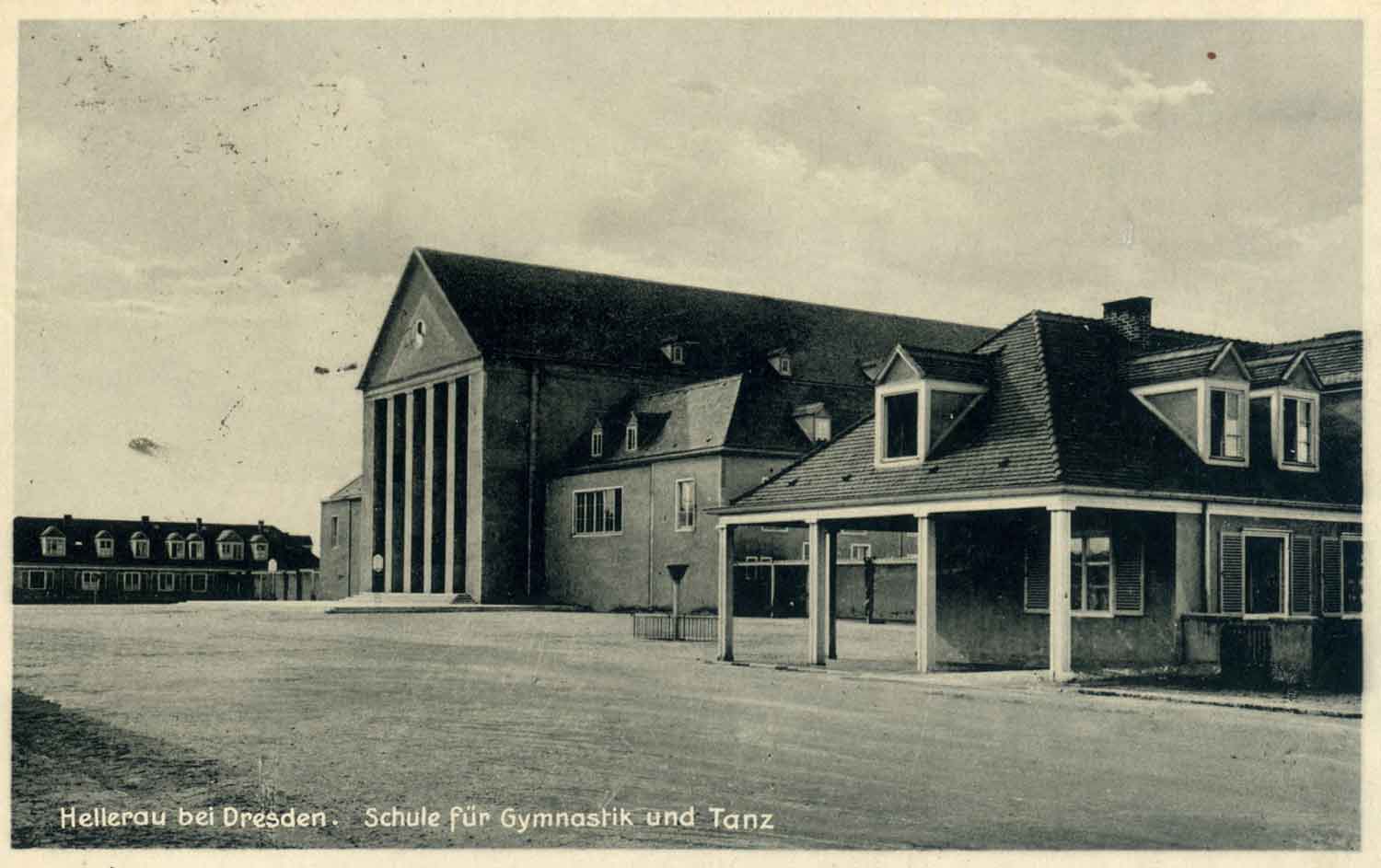The Jaques-Dalcroze music school⎟ Building
Designed by Heinrich Tessenow, the Festspielhaus (Festival Theatre) is today considered an icon of modernism and a forerunner in 20th century architecture. The column-free architecture of the Festspielhaus (Festival Theatre) features large, clear geometries and connects the individual building elements to each other rhythmically and to scale. The Festspielhaus’ (Festival Theatre’s) Große Saal (Great Hall), conceived by Swiss theatre reformer Adolphe Appia, was an innovative milestone in theatre history. The stage and auditorium formed a single unit that remained free of any permanent fixtures. The modular stage construction based on the building block principle enabled multifunctional use. The lighting direction developed by the Georgian painter and stage designer Alexander von Salzmann made it possible to light up the entire hall without separating the stage and auditorium.
Content of this article

Festspielhaus near Dresden, school for gymnastics and dance, year unknown.
Private archive Dr.-Ing. Nils Schinker.
Pioneer of reform architecture: Heinrich Tessenow
Designed by Heinrich Tessenow, the Festspielhaus (Festival Theatre) is today considered an icon of modernism and a forerunner in 20th century architecture. In historicism, it had been customary to wrap the building structure in a festive-looking ‘architectural dress’, using stylistic devices from past centuries. This construction method had already been largely replaced by the first Werkbund (Association of Crafstmen) architects’ reform architecture. Tessenow’s colleagues resorted to a simple yet monumental building style inspired by both English country house architecture and Saxon industrial architecture. The buildings were characterised by high mansard roofs with dormers, a strict emphasis on height and a clear building structure.
The innovative design by Heinrich Tessenow is distinguished by simply dimensioned structural elements and is thus a forerunner in modern building planning. One important design feature is the architecture’s large and distinct geometric shapes. The building elements of the Festspielhaus (Festival Theatre) are connected to each other rhythmically and to scale, as can already be seen in the Gothic cathedral. At the same time, Tessenow adapted the column-free architecture of early basilicas and modern factory halls for the Festspielhaus (Festival Theatre) using simple methods.
Innovative stage design
The Festspielhaus’ (Festival Theatre’s ) Große Saal (Great Hall) was an innovative milestone in theatre history. Its conception as a single space, which remained free of all permanent fixtures, offered scope for various transformations. The stage structure’s individual elements were not permanently installed, but could be rearranged again and again as in a modular system. The stage and auditorium formed one unit. Neither a stage curtain nor a permanently installed stage separated the production from the auditorium. Even the orchestra pit was one level lower and could disappear out of sight. This revolutionary theatre hall was conceived by the Swiss theatre reformer Adolphe Appia, who was familiar with Dalcroze rhythmics. Simple, clear cubes, structured and connected by wide staircases without railings, were framed by backlit fabric surfaces. The lighting direction with adjustable electric backlighting, developed by the Georgian painter and stage designer Alexander von Salzmann, was of fundamental importance. Behind two layers of fabric covering the walls at intervals of one metre were several thousand incandescent lamps controlled by a kind of light organ. This allowed the entire auditorium to be bathed in a mystical light, without almost any shadows and any separation between the stage and auditorium, which was perfect for the staged performances later.
